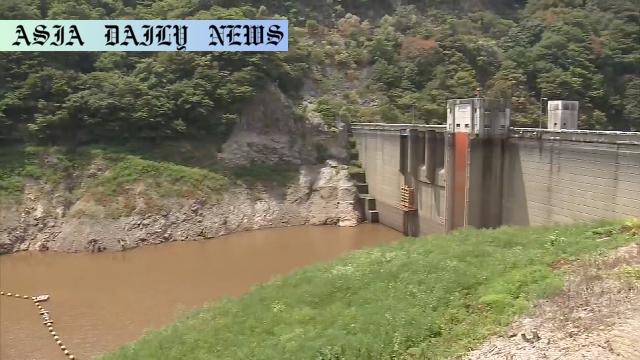Water Shortages: Japan struggles with severe heat and low rainfall, affecting agriculture, daily life, and river systems.
- Water shortages in Japan worsened by record high temperatures.
- Niigata Prefecture and Hokuriku report record-low rainfall.
- Rice crops are withering due to cracked paddy fields.
- Authorities call for reduced water consumption by 25%.

Unprecedented Heatwaves Exacerbate Japan’s Water Crisis
Japan is facing a critical water shortage due to a combination of extreme heat and record-low rainfall. The persistent rise in temperatures, exceeding 40 degrees Celsius for the fifth time this summer, has compounded the already dire situation. The Japan Meteorological Agency has reported alarmingly low rainfall levels in various regions, including only 13 percent of the monthly average along the Sea of Japan coast in Tohoku and a mere 8 percent in Hokuriku and Niigata Prefecture. These unprecedented conditions are having a severe impact on daily life, agriculture, and water-dependent industries across the country.
Immediate Measures Implemented to Conserve Water
Local authorities, aware of the gravity of the crisis, are urging residents to take immediate action. In Myoko City, Niigata Prefecture, people have been asked to reduce their water usage by 25 percent. Public facilities, including three sports centers, have temporarily shut down swimming pools to conserve resources. Alarming developments at a dam in Niigata revealed the complete depletion of its storage capacity for agricultural water. Further restrictions have been issued by Japan’s land ministry, reducing water intake in nine major rivers across Hokkaido and five other prefectures.
Impact on Agriculture and Food Security
Perhaps the most distressing consequence of this water deficiency is its impact on agriculture, especially rice farming, a staple crop in Japan. Tozawa Village in Yamagata Prefecture has seen paddy soil crack due to insufficient irrigation, leaving rice plants dried out and withering from their roots. Farmers are expressing grave concerns about the implications of these conditions on their harvests. Reduced rice output could significantly disrupt Japan’s economy and food security, increasing its reliance on imports while simultaneously raising costs for consumers. These agricultural hardships are a stark reminder of the far-reaching consequences of climate challenges.
Preparing for Long-Term Solutions
Given the frequency and intensity of drought conditions in recent years, it is evident that Japan must prepare for similar challenges in the future. The current crisis underlines the need for improved water management strategies and investment in sustainable solutions. Authorities and communities must work together to develop mechanisms to conserve water, improve irrigation systems, and explore alternative agricultural methods. Furthermore, there is a pressing need for enhanced regional collaboration, research into drought-resistant crops, and public awareness campaigns to mitigate the effects of climate anomalies in the years to come.
The Role of Climate Change
This crisis also emphasizes the undeniable influence of climate change. Rising global temperatures are altering weather patterns, causing prolonged heatwaves and unpredictable rainfall. Japan’s current plight mirrors global trends where uneven distribution of rainfall leads to either severe droughts or extreme flooding. Addressing climate change is thus paramount, requiring coordinated international efforts to reduce greenhouse gas emissions and promote renewable energy adoption. These measures can mitigate the severity of future heatwaves and stabilize global water resources, ensuring a sustainable world for future generations.



Commentary
The Urgent Need for Water Conservation
Japan’s current water crisis serves as a stark reminder of the vulnerability of modern societies to natural adversities. The record-breaking heatwaves and unprecedented lack of rainfall underscore the drastic impact of climate instability. While authorities are taking short-term countermeasures such as urging residents to reduce water usage, we must acknowledge that these steps are reactive in nature. What Japan needs is a proactive, long-term strategy that incorporates sustainable agricultural practices, infrastructure investments, and robust public awareness initiatives.
Impact on Communities and Agriculture
This situation extends beyond numbers and statistics; it directly affects livelihoods, health, and the collective morale of the affected regions. Farmers find themselves on the frontline, watching their hard work dry up under the relentless sun. Families in urban centers are now faced with restricted water usage, forcing them to reassess and adapt their daily routines. This shared hardship across rural and urban communities provides an opportunity to foster empathy and unity. However, it will take strategic government intervention to provide long-term relief and prevent similar crises.
The Global Context of Water Crises
Japan’s plight mirrors broader global trends. From drought-stricken California to the arid landscapes of sub-Saharan Africa, water shortages are a growing issue worldwide. Climate change doesn’t recognize borders, and the increasingly erratic weather patterns are proof of its far-reaching consequences. By viewing Japan’s water crisis not only as a local concern but as a global issue, the nation can take a leading role in fostering international collaborations that focus on shared resources and solutions. Addressing this challenge isn’t simply about overcoming the immediate crisis — it’s about building a template for resilience in an uncertain future.